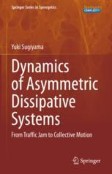Search
Search Results
-
Self-Organization of Tissues Through Biochemical and Mechanical Signals
Self-organization enables the emergence of patterns in systems without the need of an external causal agent. Instead, the interactions and the...
-
Self-organization and assembly of cellular structures
There are number of highly dynamical structures within the cell nucleus, plasma membrane and the Golgi complex that can be characterized in terms of...
-
Synchronization and Self-organization in Complex Networks for a Tuberculosis Model
In this work, we propose and analyze the dynamics of a complex network built with non identical instances of a tuberculosis (TB) epidemiological...

-
Simulation of the Self-Organization Process of Carbon Nanotube Systems
AbstractIn this paper, we develop a coarse grained numerical model for the simulation of a self-organization process for a system of carbon nanotubes...

-
Material Flow, Task Partition, and Self-Organization in Wasp Societies
Insect societies are a prime model system to investigate the processes of homeostasis, self-organization and the emergent properties of complex...
-
On a Mathematical Model of Biological Self-Organization
A system of two generalized Hutchinson’s equations coupled by linear diffusion terms is considered. It is established that for an appropriate choice...
-
Introduction to Asymmetric Dissipative Systems (ADS)
Self-organization of macroscopic phenomena by asymmetric interacting particles are studied, which often appear in material, biological, and social...
-
Data-Driven Multiscale Modeling of Self-Assembly and Hierarchical Structural Formation in Biological Macro-Molecular Systems: Pyruvate Dehydrogenase Complex
Macro-molecular self-assembly and hierarchical structural formation are crucial for a variety of systems in nature and technology. Especially...
-
Circular Causality and Function in Self-Organized Systems with Solid-Fluid Interactions
Self-organization can be characterized as the emergence of mutual constraint among elements of a system with many flexible degrees of freedom. This...
-
Phase transitions of civil unrest across countries and time
Phase transitions, characterized by abrupt shifts between macroscopic patterns of organization, are ubiquitous in complex systems. Despite...

-
Analysis of pattern formation using numerical continuation
The paper deals with the issue of self-organization in applied sciences. It is particularly related to the emergence of Turing patterns. The goal is...
-
Entropy Modeling of Network Structures
AbstractCurrently, entropy is quite often used to describe complex systems in various fields. The questions of using differential entropy for...

-
Influence of Language on the Lifespan of Populations of Artificial Intelligence
The article describes an evolutionary model for artificial intelligence intended for the design and development of intelligent systems. The key...
-
Dynamics of Asymmetric Dissipative Systems From Traffic Jam to Collective Motion
This book provides the dynamics of non-equilibrium dissipative systems with asymmetric interactions (Asymmetric Dissipative System; ADS). Asymmetric...
-
Pattern self-organization and pattern transition on the route to chaos in a spatiotemporal discrete predator–prey system
A spatiotemporal discrete predator–prey system is investigated for understanding the pattern self-organization on the route to chaos. The discrete...

-
Conclusion
InPart II, we have introduced tested interventions that help diverse teams improve the way they work. Our interventions structure core practices so...
-
The “Nuclear Winter” Epic and My Subsequent Retirement
Although my research concerning a “nuclear winter” was at most of secondary significance for the large work I had planned and begun writing at the...
-
Pattern Bifurcation in a Nonlocal Erosion Equation
AbstractThis paper considers a periodic boundary value problem for a nonlinear partial differential equation with a deviating spatial variable. It is...
-
Complex Systems in Economics and Where to Find Them
The economy as a whole and most of its constituent parts, like markets, government institutions, firms, or households, are inherently complex...
-
Frequency Synchronization and Its Possible Role in Microworld Phenomena
We note the active interest of Yu.I. Neimark for research of frequency synchronization, as well as his substantial support for research in this area....
